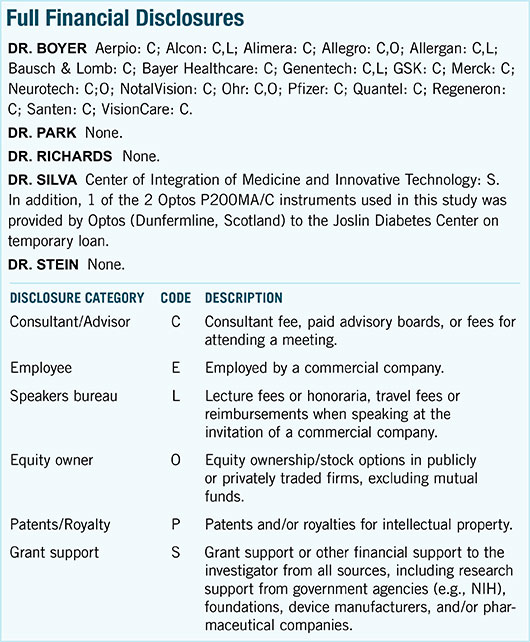Download PDF
Researchers at the University of Michigan Kellogg Eye Center have reported that metformin hydrochloride, a drug commonly prescribed for the treatment of type 2 diabetes, was associated with a 21% reduction in the risk of developing open-angle glaucoma (OAG) among patients with diabetes.1 Other oral antihyperglycemic medications did not confer a similar risk reduction.
Metformin is a caloric restriction mimetic (CRM) drug that targets known aging pathways. It has been found to extend life span and reduce risk or delay the development of some late-onset diseases, including cardiovascular disease, diabetes, and some cancers. Now, it appears that we may be able to add OAG to the list.
Study details and results. This retrospective cohort study was based on longitudinal data from more than 150,000 patients with type 2 diabetes and no preexisting record of OAG. Forty percent filled at least 1 metformin prescription. During the 10-year study period, 5,893 (3.9%) of the patients, all members of a large health care network, developed OAG.
The researchers compared users of metformin with nonusers, analyzing the data by means of regression modeling. Each model demonstrated substantial reductions in OAG risk among those using metformin. In one model, each additional 1-g exposure to metformin conferred a 0.16% reduction in the risk of developing OAG. That means that in 2 years, a patient taking the normal daily 2-g dose of metformin would have a 21% reduction in OAG risk, compared with a diabetic patient who had no metformin exposure.
“This is a substantial level of glaucoma risk reduction for the period of time evaluated,” said Julia E. Richards, PhD, Harold F. Falls Collegiate Professor of Ophthalmology and Visual Sciences at the University of Michigan.
What’s the mechanism? The researchers acknowledged that metformin’s influence on OAG risk could be associated with improved glycemic control. However, after adjustment for blood glucose levels, other glycemic medications did not have a similar effect on OAG risk reduction. On average, blood glucose levels were well controlled among both metformin and non-metformin users.
Thus, mechanisms other than glycemic control alone may explain the risk reduction associated with metformin. The authors posited that metformin may act to reduce OAG risk on multiple levels. One of these might be through geroprotective effects on neurogenesis, inflammatory systems, or longevity pathways targeted by CRM drugs.
Guidance for further studies. Complementary basic science studies are under way. If these pan out, the researchers hope to conduct a large-scale randomized clinical trial that could provide more definitive evidence of metformin’s reduction in OAG risk, said Joshua D. Stein, MD, MS, associate professor of ophthalmology and visual sciences at the University of Michigan. He suggested a clinical trial protocol in which newly diagnosed glaucoma patients would be randomized to receive either an IOP-lowering drug plus metformin or a glaucoma drug plus placebo.
Dr. Richards would also like to see studies evaluating the effect of metformin on the risk of glaucoma progression, not just on its development. Further, “These findings point to the need to evaluate CRM drugs for their ability to reduce risk of other late-onset eye diseases, too,” she added. “For now, there are limits to the conclusions that can be drawn from this study, since this was not a randomized clinical trial, and it was carried out on a very specific population of persons with diabetes.”
—Miriam Karmel
___________________________
1 Lin HC et al. JAMA Ophthalmol. May 28, 2015 [Epub ahead of print]. doi:10.1001/jamaophthalmol.2015.1440.
___________________________
Relevant financial disclosures—Dr. Richards: None. Dr. Stein: None.
For full disclosures and disclosure key, see below.

More from this month's News in Review